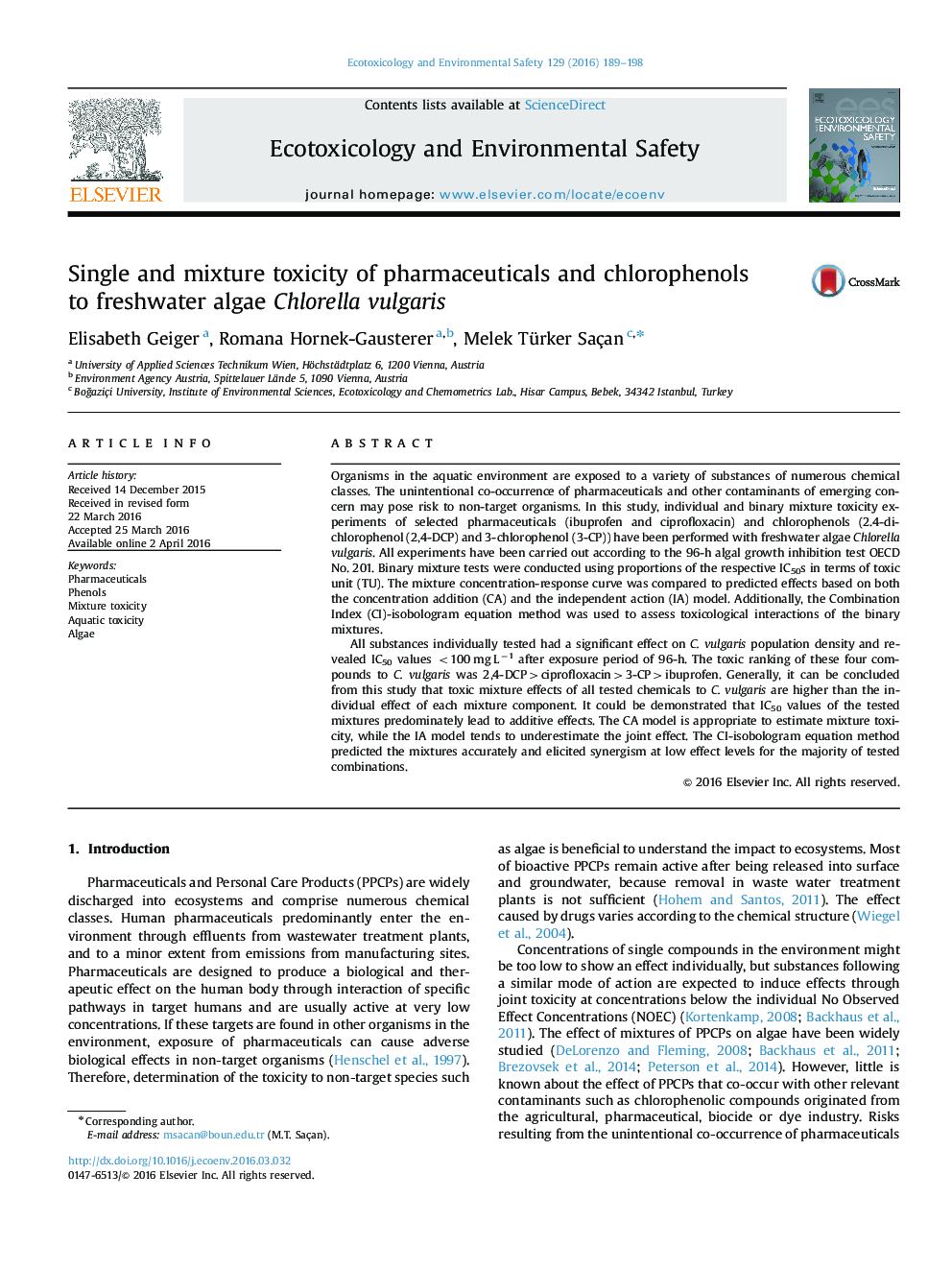| Article ID | Journal | Published Year | Pages | File Type |
|---|---|---|---|---|
| 4419251 | Ecotoxicology and Environmental Safety | 2016 | 10 Pages |
•This is the first report on binary mixture toxicities of studied chemicals to algae.•Tested mixtures are more toxic than their individual components.•CI-isobologram method appear suitable for accurate prediction of mixture toxicity•Joint effects of chemicals having different mode of action were predictable by CA.•Effects of the studied chemicals on non-target organism, algae, were emphasized.
Organisms in the aquatic environment are exposed to a variety of substances of numerous chemical classes. The unintentional co-occurrence of pharmaceuticals and other contaminants of emerging concern may pose risk to non-target organisms. In this study, individual and binary mixture toxicity experiments of selected pharmaceuticals (ibuprofen and ciprofloxacin) and chlorophenols (2.4-dichlorophenol (2,4-DCP) and 3-chlorophenol (3-CP)) have been performed with freshwater algae Chlorella vulgaris. All experiments have been carried out according to the 96-h algal growth inhibition test OECD No. 201. Binary mixture tests were conducted using proportions of the respective IC50s in terms of toxic unit (TU). The mixture concentration-response curve was compared to predicted effects based on both the concentration addition (CA) and the independent action (IA) model. Additionally, the Combination Index (CI)-isobologram equation method was used to assess toxicological interactions of the binary mixtures.All substances individually tested had a significant effect on C. vulgaris population density and revealed IC50 values <100 mg L−1 after exposure period of 96-h. The toxic ranking of these four compounds to C. vulgaris was 2,4-DCP>ciprofloxacin>3-CP>ibuprofen. Generally, it can be concluded from this study that toxic mixture effects of all tested chemicals to C. vulgaris are higher than the individual effect of each mixture component. It could be demonstrated that IC50 values of the tested mixtures predominately lead to additive effects. The CA model is appropriate to estimate mixture toxicity, while the IA model tends to underestimate the joint effect. The CI-isobologram equation method predicted the mixtures accurately and elicited synergism at low effect levels for the majority of tested combinations.
